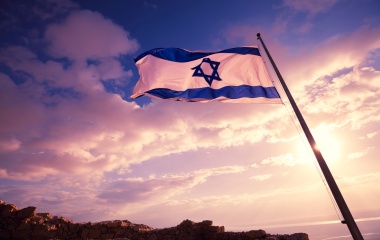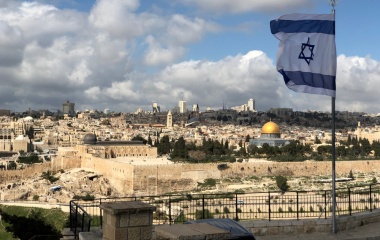
“Shimon ben Azzai said: I have received a tradition from the seventy-two elders on the day when they appointed Rabbi Elazar ben Azariah head of the academy, that all sacrifices which are eaten, though slaughtered shelo lishma, without proper intent, are valid except that their owners have not fulfilled their obligation, except the Paschal lamb and the chatat, the sin offering” (Mishna Zevachim 1:3).
“Shimon ben Azzai said: I have received a tradition from the seventy-two elders on the day when they appointed Rabbi Elazar ben Azariah head of the academy, that the Song of Songs and Kohelet defile the hands” (Mishna Yadaim 3:5).
The Talmud records a debate between Rabbi Yehuda and the Sages as to whether the Sanhedrin consisted of 70 or 71 people. When G-d instructed Moshe to gather 70 elders was he to be included in that count of 70, or is it 70 plus Moshe, making it 71 members of the Sanhedrin? But there is seemingly no source indicating that there are to be 72 members of the high court.
Tosafot (Sukkah 51b, s.v. vehayu) explains that we do have a 72nd member of the Sanhedrin, known as the muflah, the wonderous one, of the Sanhedrin, serving what we might call as an honourary justice. He was the one “appointed upon all others” (Sanhedrin 16b, Tosafot ad loc., s.v. echad). He was not an actual voting member, but he was its official leader. Like the President of the State of Israel or the Governor General of Canada this person, chosen for their great scholarship and integrity, was not directly involved in the day-to-day deliberations of the court. Yet he was the one who granted the court its legitimacy. In his absence, key decisions of the court did not carry the same weight.
The Mishna (Horayot 1:4) teaches that should the Sanhedrin, in the absence of the muflah, make an incorrect decision, the court would be exempt from bringing a par healem davra shel tzibbur, the special sacrifice to atone for serious mistakes of the court. The implication is clear: Had this non-voting but leading member of the Sanhedrin been present, it is less likely that the Sanhedrin would have made an erroneous ruling.
The tradition of the 72 elders is one relating to the day that Rabbi Elazar ben Azariah was appointed the Nassi, head, of the Sanhedrin. This was a very special day, perhaps the most monumental day of the Yavneh period of Jewish history. The Talmud (Brachot 28a) simply notes that “any time they say ‘that day’, it is a reference to the day when Rav Elazar ben Azariah was appointed the Nassi”. It was a revolutionary day, one that would change Jewish history forever.
Rabban Gamliel, descendant from the most prestigious rabbinic family[1], had been deposed from his post. And Rav Elazar ben Azariah with new and different ideas of how things should run, was appointed in his stead. He was young and energetic, too young to have made any “enemies"[2]; he “was wise, he was wealthy and he was the tenth [generation] from Ezra” (Brachot 27b).
His very first act was to open the doors of the Beit Midrash to all. Rabban Gamliel had hired a guard to keep all but the most pious out of the Beit Midrash. This one simple act necessitated bringing up to 700 chairs to accommodate all who wanted to come and study. This, in turn, led to there being “no halachic issue that was not resolved on that day”. In a beautiful act of self-contrition, “even Rabban Gamliel did not hold himself back from the Beit Midrash, even for one hour”.
The very first issue that was clarified was whether (male) converts from Amon and Moav could be accepted as part of the Jewish people. While Rabban Gamliel argued no, Rabbi Yehoshua argued that they could be. No longer could people be identified according to their ethnic background, as “the nations are all mixed together”. Whereas under his own tenure, Rabban Gamliel might have belittled Rabbi Yehoshua, under new leadership, it was the inclusive view of Rabbi Yehoshua that was accepted.
Seventy-two years ago, the State of Israel was born. Until the 5th of Iyyar 5708, there were guards preventing people from entering. With the guards removed, thousands and then millions of Jews came back home, and homes had to be built to accommodate the influx of Jews from all corners of the earth, with different cultures, customs and colours.
Some questioned the Jewishness of some of these returning Jews. But in the new State, all who would have been killed by Hitler, ym”s, were welcomed. Many, likely most, of their descendants would have been lost to the Jewish people had they gone elsewhere, assimilating into their chosen countries. Zionism enabled millions of Jews, who otherwise would have been lost to our people, to remain part of the Jewish people. For that alone we must sing praise unto G-d.
Israel is a young and vibrant society, anchored in the past yet innovative, creative and willing to take risks. It is the place where, despite the too-many internal disputes (not to mention external threats), all have managed to work together to build one of the most successful countries on earth. Like Rabbi Elazar ben Azariah, despite our young age, we are a mature-looking country, leading the world in so many different ways.
Ben Azzai notes two other disputes that were settled on “that day”. The Paschal offering and sin offering, unlike all other offerings, must be brought with proper intent to be allowed on the altar. In building this wonderful State—and the korban pesach celebrates Jewish nationhood—the Jewish people were not sin-free, neither from a traditional religious perspective nor from a secular point of view. But so many of these sins were done lishma[3] , for the sake of building a Jewish homeland after 1,900 years of exile. Sadly, too many paid the ultimate price for their commitment to the people and the land.
The other dispute noted by Ben Azzai regards the question of whether the books of Kohelet and Shir Hashirim should have been accepted into the Biblical canon. It was Ben Azzai’s testimony from the 72 elders that settled the dispute. As we recently discussed, sefer Kohelet is full of contradictions—just like the State of Israel and the Jewish people.
On the surface, Shir HaShirim is little more than a secular love poem, and the Sages did not want to include it in Tanach. But if one digs below the surface, one sees great religious fervour, meaning and teaching. None other than Rabbi Akiva declared that Shir HaShirim is the Holy of Holies of the Tanach.
There is much and many in Israel that, on the surface, appears most secular. But if one delves beneath the surface, one will see signs of the Holy of Holies: compassion, concern, caring, community, sacrifice, struggling with G-d, and so much more. We have begun to see the beginning of the fulfilment of Moshe’s charge to “Observe them faithfully, for that will be proof of your wisdom and discernment to other peoples, who on hearing of all these laws will say, ‘Surely, that great nation is a wise and discerning people’” (Devarim 4:6).
[1] Along with his request to Vespasian that the Jewish people be granted an enclave in Yavneh, Rav Yochanan ben Zackai asked that the family of Rabban Gamliel be spared (Gittin 56b).
[2] It is specifically because of the disputes between Rabban Gamliel and Rabbi Yehoshua that the latter was passed over for the position of Nassi.
[3] I am not so blinded as to the faults and sins that are committed shelo lishma, not for the sake of heaven, but today is the time to focus on the positive alone.
Moadim leSimcha leGeulah Shleimah.



